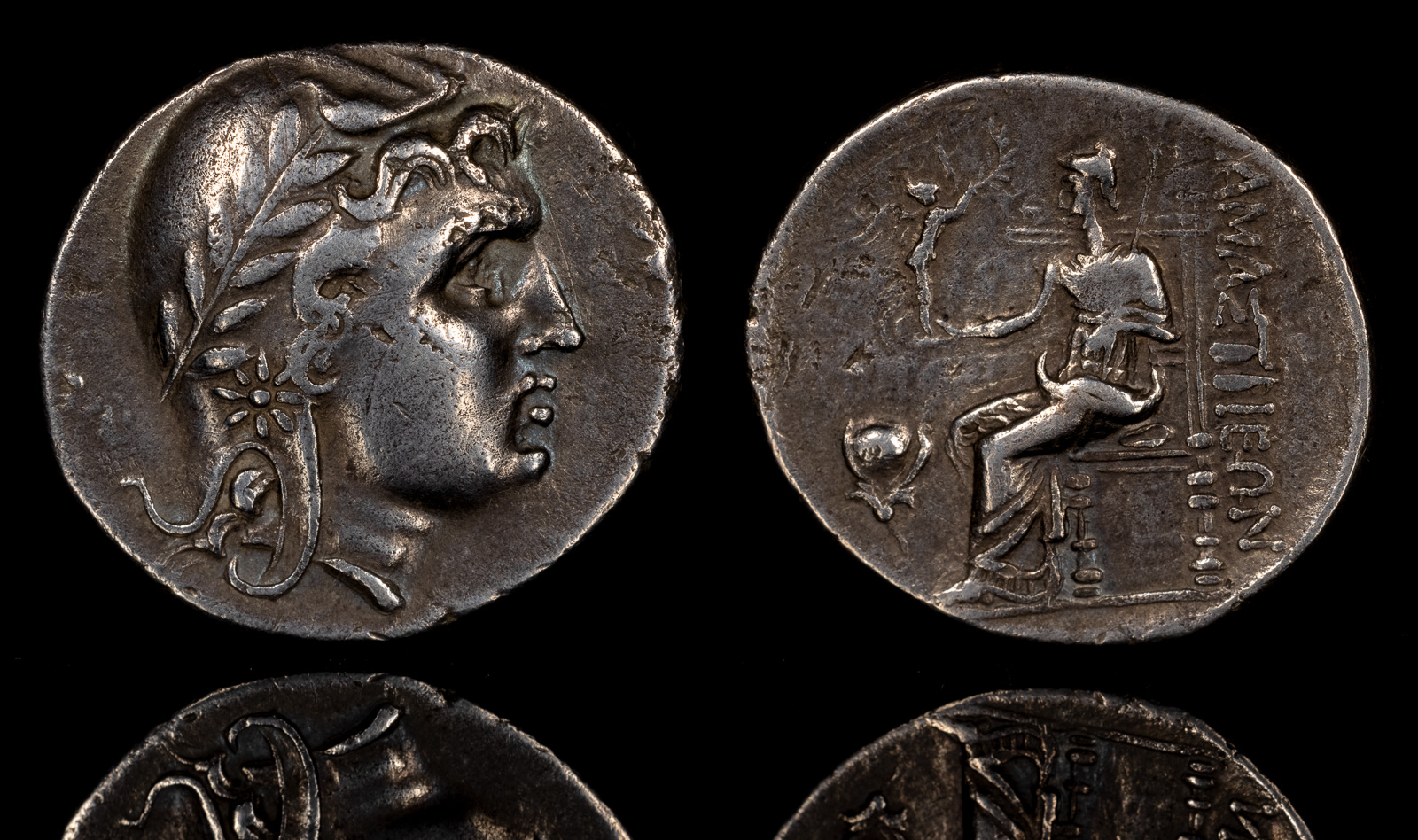
PAPHLAGONIA, Amastris. Circa 285-250 BCE
AR Stater 23mm, 8.88 g, 12h
Head of Mên right, wearing Phrygian cap decorated with laurel branch and star / Aphrodite seated left, holding in extended right hand Nike, who crowns her with wreath, and cradling lotus-tipped scepter in left arm; rose to left.
Callataÿ, Premier, Group 2, 43 (D17/R21 – this coin); RG 5; HGC 7, 356
Ex Sigmund Collection.
Ex CNG March 1999
Amastris was the first city (at least in the Hellenistic world) that a female ruler named for herself. Since having your own city was all the rage back then, she had to keep up with the fashion. So, in true fashion of the day, she gathered together the inhabitants of several cities and moved them to her new one, Amastris. Among those cities moved were Kromna, Sesamos, Kytoros, and Tios. Kromna and Sesamos previously minted their own coins. Tios later revolted from the grouping and returned to their previous settlement.
Unfortunately, she didn’t have a tremendous amount of time to enjoy it. Her two sons eventually drowned her in a lake since they were jealous of her rule.
Strabo, who grew up not far from Amastris, mentions that it was “situated on a peninsula and has harbors on each side of the isthmus.” What was Sesamos became the acropolis of Amastris. During Strabo’s time, the best boxwood came from the region.
The city of Amastris is founded by Amastris, a Persian princess and the niece of the Persian king Darius III. She establishes the city by combining four smaller settlements: Sesamos, Kytoros, Tios, and Kromna.
Following the defeat of Mithridates VI by Pompey the Great, Amastris, Amisos, and Amaseia are integrated into the Roman province of Bithynia et Pontus.
Amastris is included in the Roman province of Bithynia et Pontus during the reign of Emperor Claudius.
Pliny the Younger, serving as the Roman governor of Bithynia et Pontus, writes to Emperor Trajan about various administrative matters in the province, including Amastris.
Amastris is affected by Gothic raids during a period of instability in the Roman Empire.